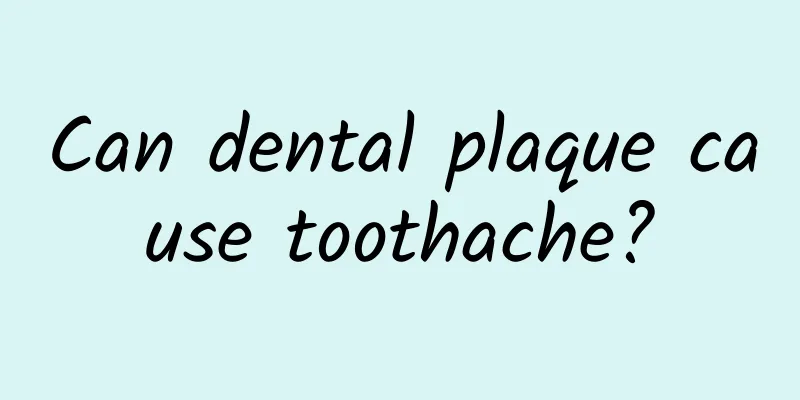How to treat hemorrhoids and bleeding in stool

|
Hemorrhoids are a common anorectal disease, and the incidence rate increases with age. Hemorrhoids are generally divided into external hemorrhoids, internal hemorrhoids and mixed hemorrhoids. These may all lead to symptoms of bloody stools. So how to treat hemorrhoids and blood in the stool? treat 1. Non-surgical treatment Asymptomatic hemorrhoids do not require treatment; symptomatic hemorrhoids do not require radical treatment; non-surgical treatment is the main treatment. (1) General treatment is applicable to most hemorrhoids, including the early stages of thrombotic and incarcerated hemorrhoids. Pay attention to your diet, avoid alcohol and spicy foods, increase fiber foods, eat more fruits and vegetables, drink more water, change bad bowel habits, keep bowel movements smooth, take laxatives when necessary, and clean the anus after defecation. For prolapsed hemorrhoids, be careful to gently push the hemorrhoids back with your hands to prevent them from falling out again. Avoid sitting or standing for long periods of time, do appropriate exercise, take a sitz bath with warm water (which may contain potassium permanganate) before going to bed, etc. (2) Local medication has been widely used. The drugs include suppositories, ointments and lotions, most of which contain Chinese herbal ingredients. (3) Oral medications are generally used to treat varicose veins. (4) Injection therapy is more effective for grade I and II bleeding internal hemorrhoids. The sclerosant is injected around the venous plexus in the submucosal layer to cause an inflammatory reaction and fibrosis, thereby compressing the varicose veins. The treatment can be repeated after one month to avoid injecting the sclerosant into the mucosal layer and causing necrosis. (5) Physical therapy: laser therapy, cryotherapy, direct current therapy, copper ion electrochemical therapy, microwave thermocoagulation therapy, and infrared coagulation therapy are rarely used. (6) Use rubber band to ligate the root of the hemorrhoids, blocking their blood supply and causing them to fall off and necrotize. This method is suitable for grade II and III internal hemorrhoids, and is more suitable for giant internal hemorrhoids and fibrotic internal hemorrhoids. 2. Surgery (1) Indications for surgery: Conservative treatment is ineffective, hemorrhoids are severely prolapsed, large fibrotic internal hemorrhoids are not well treated with injections, and there are anal fissures, anal fistulas, etc. (2) Surgical principles: Surgery is performed to reposition the prolapsed anal cushion and preserve the structure of the anal cushion as much as possible, thereby minimizing the impact on the ability to control bowel movements. (3) Preoperative preparation: When there are ulcers or infections on the surface of internal hemorrhoids, conservative treatment such as laxatives and warm water sitz baths should be performed first, and surgery can be performed after the ulcers have healed; bowel preparation should also be performed. (4) Surgical methods ① Thrombosed external hemorrhoidectomy is suitable for patients whose pain does not ease or the swelling does not shrink after conservative treatment of thrombosed external hemorrhoids. ② Traditional hemorrhoidectomy is external peeling and internal ligation. ③ Circumcision of hemorrhoids (Whitehead procedure) is a classic procedure in textbooks, which can easily lead to anal stenosis and is rarely used in clinical practice. ④PPH surgery: hemorrhoidal rectal mucosal circumcision and stapling with stapler. It was created by Italian doctor Longo and began to be promoted in 1998. It is mainly suitable for prolapsed III-IV grade mixed hemorrhoids, annular hemorrhoids, and some severely bleeding II grade internal hemorrhoids. The mechanism of PPH in treating prolapsed hemorrhoids: circular resection of 2 to 3 cm mucosa and submucosal tissue at the lower end of the rectum to restore the normal anatomical structure, i.e., the anal cushions are returned to their original position; the resection of the submucosal tissue blocks the blood supply of the superior hemorrhoidal artery to the hemorrhoidal area, causing the hemorrhoids to shrink after surgery. Compared with traditional hemorrhoidectomy, PPH surgery has shorter operation time, less postoperative pain, faster recovery and fewer complications, but the equipment is more expensive. (5) Postoperative treatment: Observe whether any complications occur, pay attention to diet, and maintain smooth bowel movements. |
<<: What causes menstrual disorders in women?
>>: Treatment and diagnosis of herpes zoster neuralgia
Recommend
What are the dangers of red spots on the penis that do not hurt or itch
There are red spots on the penis that are neither...
How to abort a baby when you are pregnant
For some women whose careers and work are affecte...
The reason why the whites of the eyes are slightly yellow
The yellowing of the whites of the eyes is mainly...
How to regulate spleen and stomach disorders, old Chinese medicine teaches you how to regulate the spleen and stomach
If you often experience symptoms such as loss of ...
What happens if you don't put your teeth in a new place?
Complete teeth are very important, but in daily l...
What are some quick ways to relieve and prevent headaches?
For today's young people, headaches are a ver...
Is Meniere's syndrome fatal?
Suffering from Meniere's syndrome is somethin...
Can I eat honeysuckle when I am pregnant?
It is beneficial to eat some honeysuckle during p...
Best time to take antelope horn powder
Antelope horn powder is a Chinese herbal medicine...
Contraindications after lumbar fusion surgery
Speaking of modern medicine, it can be said to be...
Why is the liver function normal but the viral content high?
During routine liver function tests, if the liver...
Extremely low bone marrow proliferation
When suffering from a blood-related disease, many...
What to do if the cerebral blood vessels are slightly blocked
Mild blockage of cerebral blood vessels is relati...
Is the left kidney cyst serious? The harm is so great
Studies have found that left kidney cysts are ext...
What is the best sleeping position for pregnant women to protect their fetus in bed?
If a pregnant woman has signs of miscarriage, the...









